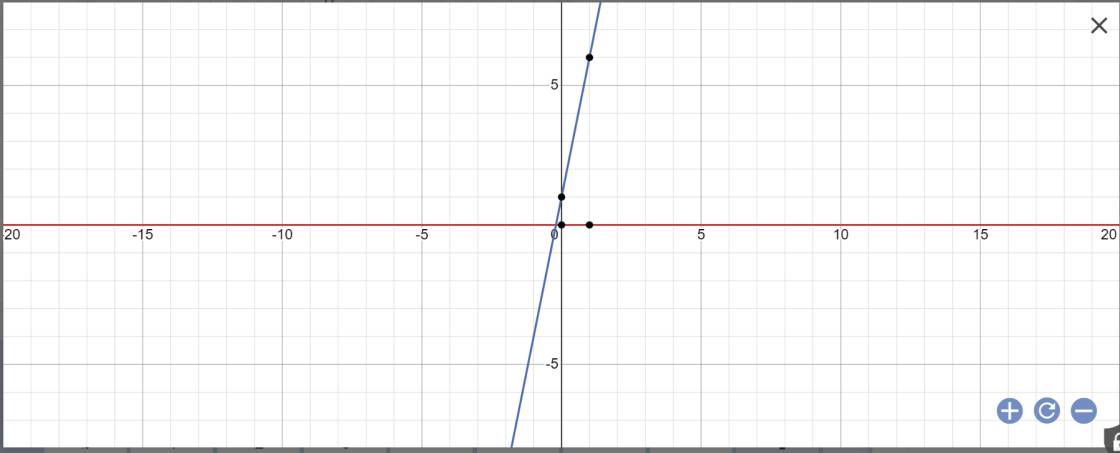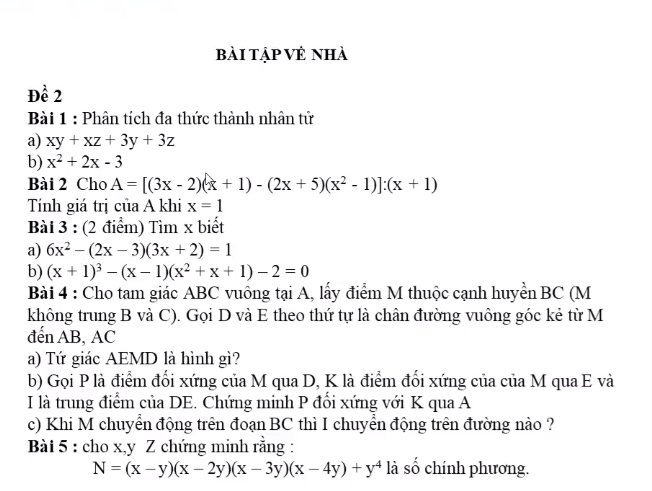Bài 4:
a: Thay x=-1 và y=0,5 vào y=ax+1, ta được:
\(a\cdot\left(-1\right)+1=0,5\)
=>\(a\cdot\left(-1\right)=0,5-1=-0,5\)
=>a=0,5
b: Khi a=0,5 thì \(y=0,5\cdot x+1\)
Lập bảng giá trị:
| x | -1 | 0 | 1 |
| y=0,5x+1 | 0,5 | 1 | 1,5 |
Vẽ đồ thị:

Bài 3:
a:
b: Tọa độ A là:
\(\left\{{}\begin{matrix}x=0\\y=-x+4\end{matrix}\right.\)
=>\(\left\{{}\begin{matrix}x=0\\y=-0+4=4\end{matrix}\right.\)
Vậy: A(0;4)
Tọa độ B là:
\(\left\{{}\begin{matrix}x=0\\y=x-4\end{matrix}\right.\Leftrightarrow\left\{{}\begin{matrix}x=0\\y=0-4=-4\end{matrix}\right.\)
vậy: B(0;-4)
Tọa độ C là:
\(\left\{{}\begin{matrix}-x+4=x-4\\y=x-4\end{matrix}\right.\)
=>\(\left\{{}\begin{matrix}-2x=-8\\y=x-4\end{matrix}\right.\Leftrightarrow\left\{{}\begin{matrix}x=4\\y=4-4=0\end{matrix}\right.\)
Vậy: C(4;0)
c: A(0;4); B(0;-4); C(4;0)
\(AB=\sqrt{\left(0-0\right)^2+\left(-4-4\right)^2}=\sqrt{0^2+\left(-8\right)^2}=8\)
\(AC=\sqrt{\left(4-0\right)^2+\left(0-4\right)^2}=\sqrt{4^2+4^2}=4\sqrt{2}\)
\(BC=\sqrt{\left(4-0\right)^2+\left(0+4\right)^2}=\sqrt{4^2+4^2}=4\sqrt{2}\)
Vì \(CA^2+CB^2=AB^2\)
nên ΔABC vuông tại C
=>\(S_{CAB}=\dfrac{1}{2}\cdot CA\cdot CB=\dfrac{1}{2}\cdot4\sqrt{2}\cdot4\sqrt{2}=2\sqrt{2}\cdot4\sqrt{2}=16\)



















